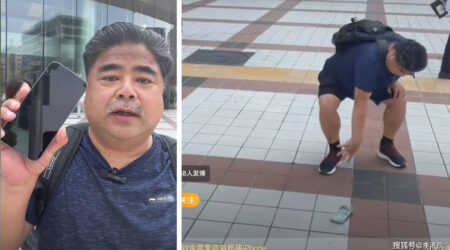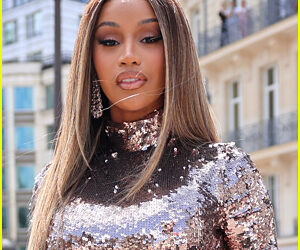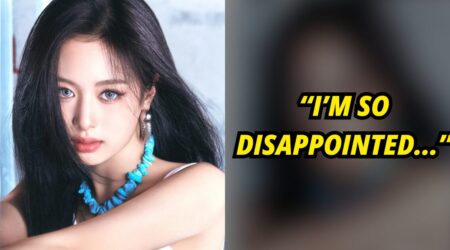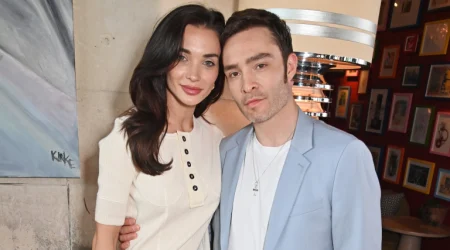Angelina Jolie and Britney Spears got hair extensions all wrong. How to do yours right, and the best hair extensions for you

Angelina Jolie and Britney Spears got hair extensions all wrong. How to do yours right, and the best hair extensions for you
There are two main misconceptions about hair extensions: They’re only meant for celebrities attending red-carpet events, and they can only be used to add length.
While it’s true that A-listers have, for decades, used them to make their hair appear longer, extensions can be used by almost anyone to add volume and depth to hair.
There are certain things to be aware of, however, to avoid the kinds of extension malfunctions more than a few celebrities have fallen foul to during their careers.
One such case that went viral involved Angelina Jolie during the premiere of The Eternals at the 2021 Rome Film Festival. While she looked ravishing in a silver Versace dress, her botched extension job became the centre of attention. Not enough pieces were used, and the placement for them was too low, leaving her hair looking uneven and jagged.
Fashion designer Betsey Johnson similarly struggled with visible extensions atop her root line at the opening party of the Whitney Museum in New York in 2015, and Britney Spears has been no stranger to poorly placed pieces throughout her career.
This type of thing can happen to any of us, so it pays to heed the following bits of advice for the best extension outcomes.
Different types of hair
The first thing you’ll need to figure out is what type of hair you want your extensions to be made of.
“There are different grades of hair that can be used for hair extension application,” says Shawntá Johns, hairstylist and owner of California-based hair extension company By Shawntá Johns.
Synthetic hair is a great option for those trying extensions for the first time because it can offer a relatively authentic, quality look for an affordable price. The disadvantage of artificial hair, however, is that it is mainly made of plastic, so it can only be used as it comes – you can’t use heat to style it.
One of the issues people run into when using synthetic extensions is how, over time, they become tangled and lose their shine.
Many companies coat their synthetic hair strands with silicone to make them look glossy, but this may eventually wear off, leaving the extensions dull and lifeless. With this being said, try to avoid both fake and real hair extensions that use silicone.
There are various grades of real hair extensions, but two terms you’re likely to hear often are “remy”, meaning hair that is virgin and has never been chemically treated; and “cuticle intact”, which refers to uber-healthy locks that still maintain a flat cuticle.
When sourcing remy hair extensions, manufacturers meticulously select each strand of hair to make sure the cuticle stays untouched and healthy, so all the hairs run in the same direction.
This will allow for the extension pieces to look and feel smooth and polished.
Different types of extensions
Once you’re aware of the types of hair available, the next step is to select the extension type appropriate for the look you’re trying to achieve. There are an overwhelming amount of different options on the market today, which is why many hair stylists recommend consulting an expert to help with the decision.
Sew-in extensions – also known as weaves – are a go-to choice for long-term use. Weaves are sewn, glued, or wrapped around natural hair that’s been braided into cornrows.
They’re best for medium to thick hair, as they need to be securely attached. They are considered among the most durable extensions.
Alternatively, clip-in extensions offer an easy, temporary style change – adding a fringe, a bun, braids, a ponytail, or a few extra inches of hair. “You can wear them just for a day or special occasion and then remove them. If you take good care of them, they can last you a long time,” Johns says.
They come in strands connected at the base with either cloth or silicone, and small snap clips linked to them, so all you have to do is attach them to your natural hair and you’re ready to go.
Another option is tape-in extensions, which, as the name suggests, are pre-taped into hair bundles and then glued or taped into your hair.
In order for them to look natural, your stylist will align them to your hair roots to then apply the glue to attach them to your hair.
They employ flattened beads or metallic cylinders to latch onto your hair. They’re a popular choice for those looking to dodge the use of glues, tapes, or fusion methods.
Unlike weaves, I-tips don’t involve braiding, so your real hair is easier to handle and style, allowing for more flexibility, as you’ll be able to pull your hair into a ponytail or topknot without risking the extensions’ base being revealed.
Halo extensions are considered the best choice for those looking for low-maintenance, no-commitment hair extensions. Multiple hair strands are sewn together onto an almost invisible cord that lays flat on the crown, seamlessly blending with your natural mane.
Will extensions damage my hair?
If applied by a properly trained stylist there shouldn’t be significant damage to your hair, so make sure to check your stylist’s credentials before agreeing to anything.
Moreover, if you struggle with any kind of active hair loss or experience abnormally fine or scattered hair, hair extensions may not be a good idea, as they could worsen your hair condition.












Leave a Reply